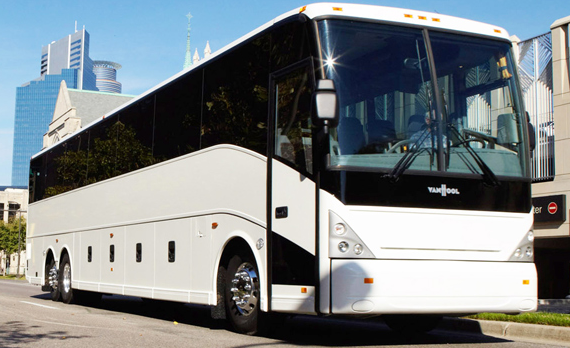NTSB Calls for New Motorcoach Safety Requirements
The National Transportation Safety Board (NTSB) has called for new levels of safety in the motorcoach industry, including recommendings that motorcoach interiors be designed with improved flammability requirements as well as improved emergency exits, and that event data recorders be installed on commercial trucks and motorcoaches.
The recommendations resulted from the investigation of the truck-motorcoach collision that resulted in 10 fatalities in Orland, California on April 10, 2014. In the crash, a 2007 Volvo truck-tractor, operated by FedEx Freight, Inc. crossed a 58-foot-wide median, struck a 2013 Nissan Altima four-door passenger car, and then collided head-on with a 2014 Setra motorcoach.
Both the truck and the motorcoach drivers were killed, along with eight motorcoach passengers. Thirty-seven motorcoach passengers and two occupants of the passenger car were injured. Investigators were unable to determine why the truck crossed the median, but they ruled out truck and motorcoach driver experience, licensing and training, as well as alcohol and drug use, mechanical factors, and weather as causes of the crash. Likewise, the agency found no evidence that the driver was experiencing distraction, fatigue, or that he intentionally crossed into opposing traffic.
“The investigation brought to light the difficulty of getting out of a burning motorcoach,” said NTSB Chairman Hart. “It is unacceptable for anyone who survives a crash to perish in a post-crash fire because the exits were too hard to find or too difficult to use.” The investigation revealed inadequacies in the fire performance standards for commercial passenger vehicle interiors, Federal Motor Vehicle Safety Standard (FMVSS) 302.
The flammability testing under FMVSS 302 involves a small-scale fire source, such as those that might be caused by matches or cigarettes – which differ drastically from the actual common causes of bus fires. The Board also found that neither the motorcoach driver who initiated the trip nor the relief driver gave a safety briefing or played the prerecorded safety briefing that the company had provided, and many passengers struggled to locate and open the emergency exit windows.
 At least two passengers died because they could not exit the motorcoach before succumbing to asphyxiation due to inhaling smoke from the fire. According to Fed officials, “pre-trip safety briefing or a video about evacuation could have expedited the evacuation process and possibly saved lives and mitigated injuries.” The Board has also found that the windows on the accident motorcoach, from which escaping passengers had to jump, were more than seven feet off the ground – higher than the wings of some airplanes – and did not have a mechanism to keep them open.
At least two passengers died because they could not exit the motorcoach before succumbing to asphyxiation due to inhaling smoke from the fire. According to Fed officials, “pre-trip safety briefing or a video about evacuation could have expedited the evacuation process and possibly saved lives and mitigated injuries.” The Board has also found that the windows on the accident motorcoach, from which escaping passengers had to jump, were more than seven feet off the ground – higher than the wings of some airplanes – and did not have a mechanism to keep them open.
The Board concluded that current standards lack adequate requirements for emergency lighting and signage and reiterated several longstanding previous recommendations for standards that that would require independently powered lighting fixtures, use of photo luminescent material to mark emergency exits, and windows that remain open after being opened for emergency evacuations.
The Board also concluded that having a secondary door for use as an emergency exit would expedite evacuations and reduce the potential for injuries caused by jumping from window exits. Hart said that neither the truck-tractor nor the motorcoach had event data recorders, which impeded the investigation of the accident’s cause.
Category: General Update, Safety











